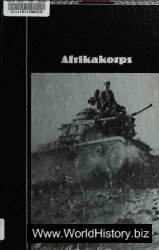During World War II, amphibious warfare, the practice of invading enemy-held territory from the sea by transporting troops, along with armor, artillery, and all material to sustain short-term operations, and then securing a beachhead, became a new operational art. Requiring the full integration of air, land, and sea forces, it also depended upon a degree of planning, organization, technical and operational competence, and flexibility of command and control rarely seen prior to 1942. Although methods were initially crude, by 1945 the art of amphibious warfare was brought to near perfection, especially by the U. S. Marines and the U. S. Army. Although Japan and Germany carried out limited amphibious assaults between 1937 and 1942, it was the United States that first created a specific amphibious warfare doctrine, with specialized troops, landing craft, weapons, and equipment.

The amphibious assault of Normandy beaches was a major part of the Allies' Operation Overlord. Seen here are men of the veteran U. S. First Infantry Division going ashore under enemy fire. (Library of Congress)
The U. S. Marine Corps began amphibious warfare experiments in the 1930s and subsequently tailored its weapons and units to fit the naval ships then under construction. In addition, the marines experimented with landing craft, based on the American Higgins boat, and with amphibious tracked vehicles and other larger types of craft developed in Britain. The marines also developed the concept of combat loading, ship-to-shore artillery support, as well as close air support. All six U. S. Marine divisions during World War II were trained in amphibious assault tactics, and marine instructors trained U. S. Army divisions that were used in the landings of the North African campaign, at Sicily, in the Italian campaign, in the invasion of Normandy, and at the Aleutians, New Guinea, the Philippines, and Okinawa.
The drive of the U. S. Navy and Marine Corps across the central Pacific against Japan in the World War II Pacific theater started with the assault on Tarawa in the Gilbert Islands in November 1943, which demonstrated the validity of amphibious warfare. Although marine forces encountered fierce opposition and heavy losses, amphibious assaults were subsequently carried out in the Marshall Islands (February 1944), in the Mariana Islands (June-July 1944), on Peleliu (September 1944), at Iwo Jima (February 1945), and at Okinawa (April 1945).
General Douglas MacArthur, commanding U. S. Army forces in the Southwest Pacific theater, became equally expert in amphibious operations and performed a series of leapfrog assaults in New Guinea and the Philippines between 1942 and 1945. Indeed, U. S. Army forces in the Pacific undertook more amphibious assaults than the Marine Corps, and between October 1944 and August 1945 alone, MacArthur conducted 52 amphibious landings against Japanese-held areas.
In the European theater, the British carried out amphibious operations at Dieppe in August 1942, and larger, more successful landings with U. S. Army forces in North Africa; at Sicily, Salerno, and Anzio in Italy; in southern France; and at Normandy. Amphibious operations became central to British and American strategic conduct of the war. The amphibious assault was shown at its most complex in the Normandy invasion on June 6, 1944, and the January 1945 invasion of Luzon Island in the Philippines, which were the largest operations of their kind in history.
Landing forces were usually divided into assault troops, reinforcing units, and occupation forces. Following a prelanding air and naval bombardment, landing craft carrying the assault formations were guided toward the beaches. Landing craft were loaded with supplies and equipment in such a way that they could be unloaded in the order they were needed ashore. The assault took place in waves using specially designed landing craft, each carrying a complete military unit. Each wave was timed to reach shore at a particular time to prevent an excessive buildup of forces on the beach and to assure landing in the correct tactical order. Landing forces were most vulnerable when hitting the beach, and it was vital to have the correct mix of air and naval gunfire available at H-Hour, the moment of landing on D day, to assure that troops would not be pushed back into the sea. Complications necessitated great command flexibility. Once troops had secured a beachhead, reinforcing units arrived with heavier equipment and weapons. When the beachhead was secure, occupation forces, usually comprised of logistical and construction personnel, landed to establish a base for further operations.
Further reading: Jeter A. Isley and Philip A. Crowl, The U. S. Marines and Amphibious War: Its Theory and Practice in the Pacific War (Princeton, N. J.: Princeton University Press, 1951); John A. Lorelli, To Foreign Shores: U. S. Amphibious Operations in World War Two (Annapolis, Md.: U. S. Naval Institute Press, 1995).
—Clayton D. Laurie




 World History
World History









